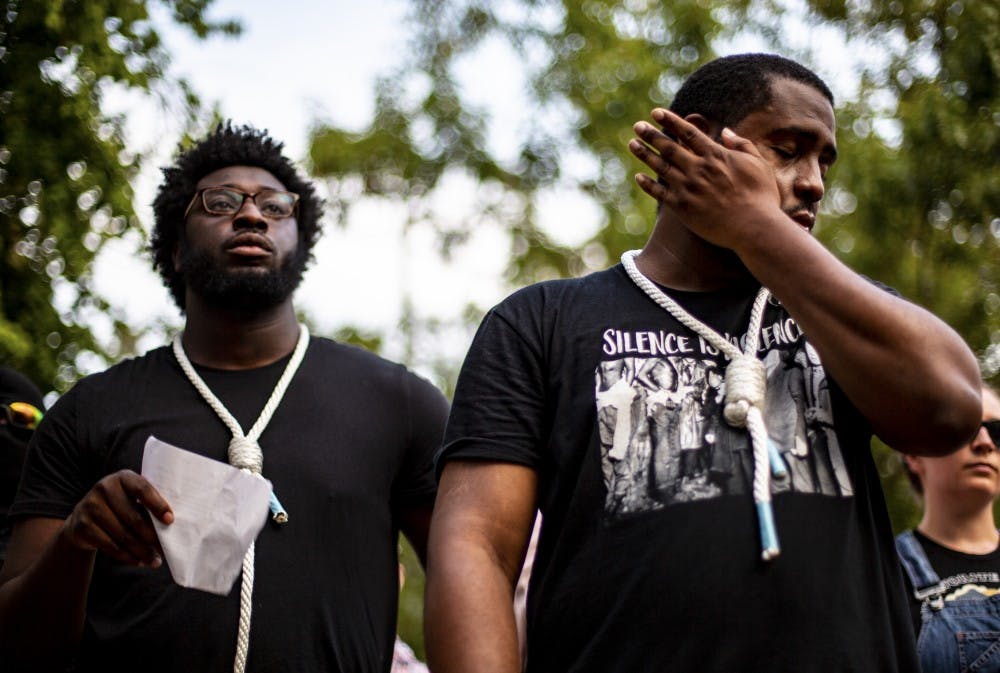A noose rests around each of the necks of Jerry Wilson and Cortland Gilliam, just like they have for the last eight weeks.
To the unassuming eye, they look like necklaces. The white rope is intentionally finished with Carolina Blue tape to hold together its frayed edges, as if the visceral symbol of injustice is trying to blend into its surroundings.
Wearing the noose, Wilson said, protests the University’s lack of commitment to changing its unwelcoming racial culture, and represents what he felt when he’d walk through the upper quad.
“If you didn't know what the noose was for, but you saw Carolina Blue and white, this wouldn't disturb you. But if you know the purpose of the noose, and most people do, they'll look at it and say, ‘Oh, that doesn't look right,’” Wilson said.
By engaging in this activism, Wilson and Gilliam are some of many graduate students in the country and throughout history who’ve taken up the mantle as leaders of campus movements. They join a long list of UNC graduate student activists — including George Vlasits, an anti-Vietnam War protester in the 1960s, and Maya Little, a current UNC graduate student of history who faced Honor Court and criminal charges for staining Silent Sam with red ink and her own blood last April.
This is Wilson and Gilliam’s second iteration of the protest. The first began on Aug. 20, when they pledged to wear their nooses until the Confederate monument was removed from its pedestal in McCorkle Place. The nooses hung around their necks for a couple of hours until protesters toppled the statue that evening.
Eight weeks ago, though, on the heels of the UNC Board of Trustees’ proposal to relocate Silent Sam into a history center on a different part of campus, Wilson and Gilliam decided to put their nooses back on.
"I'm not sure how much ambitions have changed in terms of wanting to generate widespread visibility of the protest and engagement with its message. If anything, with the landscape being somewhat different now, the question becomes how to best sustain the engagement and dialogue absent the presence of a physical rallying point," Gilliam said.
This protest, this time, is less of an attempt to obtain a deliverable that shows progress, Wilson said, and more of a show of sustained commitment to changing the culture at UNC.



